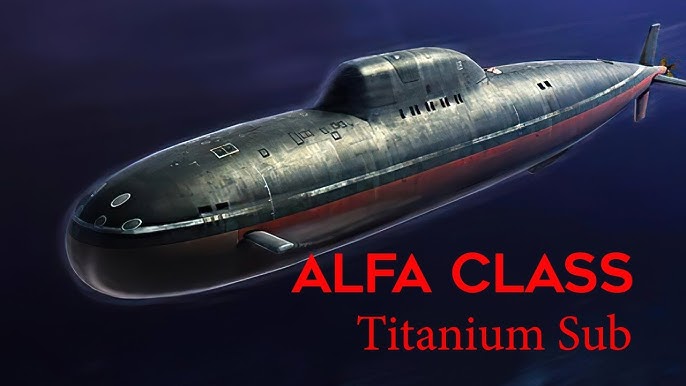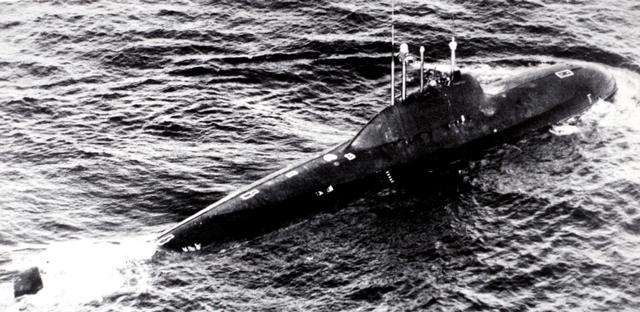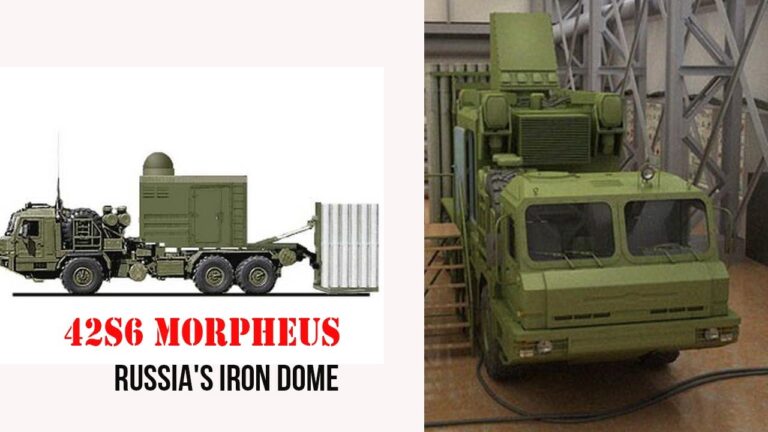
Russia's Titanium Alfa-Class Submarine
Introduction
Russia’s Titanium Alfa-Class Submarine was a revolutionary Cold War marvel, capturing the intrigue of military enthusiasts and sparking concerns among NATO counterparts. This unique submarine, produced by the Soviet Union, set benchmarks in underwater speed, depth, and stealth.
With a titanium hull and a groundbreaking lead-bismuth-cooled reactor, this submarine’s advanced features made it one of the most remarkable naval engineering feats of its time. This article explores the impressive details behind Russia’s Titanium Alfa-Class Submarine Explained, highlighting its design, performance, unique challenges, and enduring legacy.
The Alfa-Class Advantage: Russian Innovation in Submarine Warfare
Russia’s Titanium Alfa-Class Submarine Explained starts with an understanding of its unmatched capabilities. Introduced in the early 1970s, the Alfa-class represented Soviet ingenuity in crafting a highly effective platform to counter NATO’s anti-submarine warfare (ASW) measures. With a top speed exceeding 40 knots and the ability to dive far deeper than its Western contemporaries, the Alfa was engineered for swift evasion and formidable stealth.
Russia’s Titanium Alfa-Class Submarine One of the most defining characteristics of the Alfa class was its titanium hull. This hull was not only stronger and more resilient than conventional steel, but it also greatly minimised the submarine’s magnetic signature.
The reduced magnetic profile made it exceedingly difficult to detect, giving the Soviets a crucial advantage in their ongoing Cold War with the West. As part of Russia’s Titanium Alfa-Class Submarine Explained, these stealth features are essential in understanding its role in strategic deterrence.

Unprecedented Speed and Depth
The Alfa-class was designed to operate at exceptional speeds and depths, which set it apart from traditional submarines. With the capability to reach over 40 knots, or roughly 46 miles per hour, this submarine could outpace nearly every other submarine of its time. Its unique lead-bismuth-cooled reactor provided the immense power necessary for such high speeds, offering a more compact yet powerful energy source than conventional nuclear reactors.
Diving depth was another area where the Alfa-class excelled. Traditional submarines of the era could not match the Alfa’s ability to descend to such extreme depths, making it a significant challenge for NATO ASW assets.
This capability provided an additional layer of security, allowing the Alfa to evade both surface and underwater threats more effectively than any other submarine in its class. By examining Russia’s Titanium Alfa-Class Submarine Explained, one can appreciate how these features made it an elusive and formidable opponent in underwater warfare.
The Role of Titanium: Durability and Stealth Combined
The titanium hull was a revolutionary choice for the Soviet Alfa-class submarines. Titanium, though expensive and difficult to work with, was lighter, stronger, and highly resistant to corrosion, making it ideal for withstanding the immense pressure found in the deep ocean. This material choice allowed the Alfa-class to dive deeper and maintain structural integrity better than traditional steel-hulled submarines.
Beyond durability, titanium’s low magnetic signature was crucial in enhancing the Alfa’s stealth capabilities. By reducing the submarine’s magnetic field, the Alfa-class became harder to detect by magnetic anomaly detectors (MAD) employed by NATO forces.
This stealth factor was essential in a time when the Cold War intensified underwater military strategies. As Russia’s Titanium Alfa-Class Submarine Explained, this investment in titanium underscored the lengths to which the Soviets went to ensure tactical superiority.
A Groundbreaking Reactor Design
One of the Alfa-class’s defining features was its lead-bismuth-cooled reactor. Traditional submarines generally rely on water-cooled reactors, which are safer but require more space and infrastructure. The lead-bismuth-cooled reactor, on the other hand, offered a more compact power source that enabled the Alfa-class to attain high speeds and a sleek, agile design.
However, this innovation came with significant challenges. The lead-bismuth reactor system required careful management, as the lead and bismuth could solidify at lower temperatures, creating the risk of reactor cooling issues. In fact, the K-123, one of the Alfa-class submarines, experienced a reactor leak in 1982 due to complications with the lead-bismuth cooling system.
Despite the remarkable engineering, this reactor type was costly and technically demanding, limiting the Alfa-class’s operational use. Understanding these issues is central to fully appreciating Russia’s Titanium Alfa-Class Submarine Explained.
Limited Production Due to High Costs and Maintenance Demands
Only seven Alfa-class submarines were built, largely because of the prohibitive costs associated with their construction and maintenance. While the titanium hull and lead-bismuth reactor granted it unmatched capabilities, they also posed significant logistical and financial challenges. The submarines needed highly specialised maintenance, which proved difficult to consistently manage.
These submarines were typically kept in port and only prepared for rapid deployment in the event of heightened tensions rather than being assigned to regular patrols. Given the Soviet Union’s limited resources, the high operational expenses led to the early retirement of the Alfa-class fleet by 1996.
As we examine Russia’s Titanium Alfa-Class Submarine Explained, it becomes clear that while the Alfa represented the pinnacle of Cold War submarine technology, it was ultimately too complex and costly for sustained service.

Accidents and Technical Hurdles
Throughout their service life, the Alfa-class submarines faced multiple technical issues, most notably with their unique reactor system. The K-123 incident in 1982 highlighted the risks associated with the lead-bismuth-cooled reactor, which required strict temperature control to avoid solidification. The leak incident underscored the Alfa-class’s experimental nature and the difficulties of operating such advanced technology with limited resources.
Despite their promising potential, these technical difficulties and the high cost of titanium led the Soviet Union to gradually phase out the Alfa-class submarines. Nevertheless, as outlined in Russia’s Titanium Alfa-Class Submarine Explained, the Alfa-class remains a lasting testament to Soviet technical prowess in naval engineering.
Legacy and Impact on Modern Submarine Design
Although the Alfa-class submarines had a relatively short operational life, they have forever influenced submarine technology. The design philosophy behind the Alfa-class has influenced modern Russian submarine projects, especially in the areas of stealth, speed, and reactor design. Additionally, Western navies took significant interest in countering the capabilities of the Alfa-class, leading to advancements in NATO’s ASW tactics and technology.
The legacy of the Alfa-class lives on as a symbol of Russian ingenuity and ambition during the Cold War, reminding military analysts and historians of the technical advancements achieved under Soviet leadership. Through Russia’s Titanium Alfa-Class Submarine Explained, enthusiasts can appreciate how this pioneering submarine challenged conventional norms and had a long-lasting effect on military naval technology.
Conclusion
Russia’s Titanium Alfa-Class Submarine Explained offers a comprehensive view of one of the Soviet Union’s most ambitious naval projects. With its unmatched speed, depth capabilities, titanium construction, and innovative reactor design, the Alfa-class was a formidable Cold War weapon that posed a genuine challenge to NATO forces.
While the limitations of cost, complexity, and operational hazards ultimately led to their decommissioning, the Alfa-class submarines remain a significant achievement in underwater engineering. These submarines underscore the technical proficiency and resilience of Russian naval innovation, serving as an enduring reminder of the Soviet Union’s ambitions during the Cold War.
References
- Polmar, Norman, and K. J. Moore. Cold War Submarines: The Design and Construction of U.S. and Soviet Submarines. Washington, D.C.: Brassey’s, 2004.
- Sutton, H.I. “Alfa-Class Submarine.” Covert Shores, www.hisutton.com/Alfa-class.html
- “The Soviet Alfa-Class Submarines”. Naval Technology, https://www.naval-technology.com







